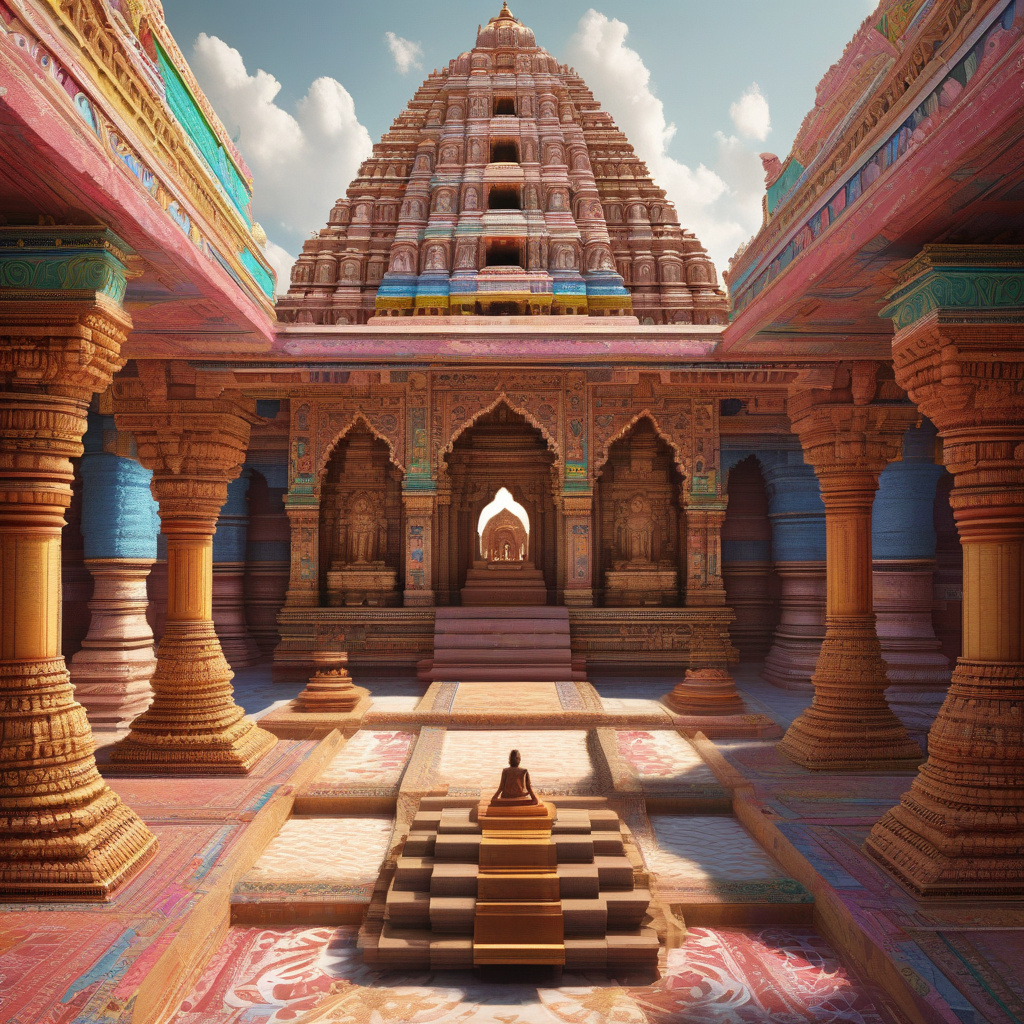AI: The New Spiritual Guide Revolutionizing Worship in India
In a country where ancient traditions and modern advancements coexist harmoniously, the integration of artificial intelligence (AI) into spiritual practices is gaining momentum. From virtual darshan to scripture-based chatbots, technology is becoming a bridge between modern life and ancient belief systems, revolutionizing the way worshippers connect with their faith in India.
One of the most intriguing applications of AI in the realm of spirituality is the concept of virtual darshan. Traditionally, darshan refers to the act of beholding or receiving the blessings of a deity in Hinduism. With the help of AI, worshippers can now experience darshan virtually through immersive technologies such as virtual reality (VR) and augmented reality (AR). This innovation allows devotees to have a surreal encounter with their deities from the comfort of their homes, transcending physical limitations and geographical boundaries.
Moreover, AI-powered chatbots are being developed to assist worshippers in their spiritual journey. These chatbots are programmed to engage in conversations based on religious scriptures, providing guidance, answering theological questions, and offering words of wisdom to those seeking spiritual enlightenment. By leveraging natural language processing (NLP) and machine learning algorithms, these chatbots can simulate meaningful interactions, offering worshippers a sense of companionship and support in their quest for divine knowledge.
The advent of AI in spiritual practices is not limited to Hinduism but is also making waves in other religious communities across India. For instance, in Sikhism, AI is being utilized to create digital versions of the Guru Granth Sahib, the central religious scripture of Sikhism. These digital repositories enable followers to access the sacred teachings and hymns of the Gurus online, fostering a deeper understanding and connection to their faith in the digital age.
Furthermore, AI is playing a pivotal role in preserving and disseminating ancient texts and scriptures that are at risk of being lost or forgotten. By digitizing and analyzing these texts, AI algorithms can help scholars decipher the meanings, detect patterns, and uncover hidden insights within these literary treasures. This not only aids in the preservation of cultural heritage but also facilitates the exploration and interpretation of religious texts in new and innovative ways.
As AI continues to evolve and permeate every aspect of human life, its integration into spiritual practices raises ethical questions and concerns. Some critics argue that relying on AI for religious guidance may diminish the personal and intimate nature of spirituality, reducing it to mere algorithms and data points. However, proponents of AI in spirituality believe that technology can complement traditional practices, offering new avenues for exploration and expression of faith.
In conclusion, the intersection of AI and spirituality in India represents a unique blend of tradition and technology, where ancient belief systems are being revitalized and reimagined for the digital age. From virtual darshan to scripture-based chatbots, AI is serving as a new spiritual guide for worshippers, enriching their religious experiences and deepening their connection to the divine. As we embrace these technological advancements with an open mind and a reverent heart, we pave the way for a future where technology not only shapes our lives but also nurtures our souls.
AI, Spirituality, India, Technology, Worshipers












